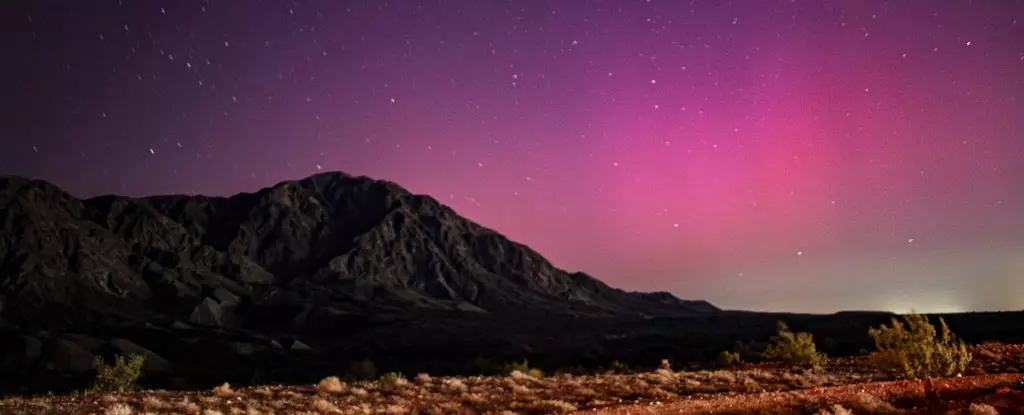Recently, the Earth experienced a powerful solar storm that has the potential to bring the northern lights to night skies further south than usual. The intensification of geomagnetic activity, caused by coronal mass ejections from the Sun, has raised concerns about the impact of such events on our planet.
The level-four geomagnetic storm observed on Monday, rated on a scale of five, has the potential to disrupt high-frequency communications, interfere with satellites, and cause overloads on the electricity grid. This poses a significant threat to sensitive infrastructure and necessitates the implementation of precautionary measures to mitigate these undesirable effects.
According to the US National Oceanic and Atmospheric Administration (NOAA), the current solar storm may allow for auroras to be visible as far south as Alabama and northern California. Eric Lagadec, an astrophysicist at the Cote d’Azur Observatory in France, expressed optimism about the prospects of seeing auroras, provided the conditions persist until nightfall.
In May, the Earth experienced the most powerful geomagnetic storms recorded in two decades, causing auroras to illuminate the night sky in the United States, Europe, and Australia at lower latitudes than usual. This increase in the frequency of such events is attributed to the Sun nearing its peak activity in its 11-year cycle.
As solar storms continue to impact Earth’s magnetosphere, it is essential for authorities and operators of critical infrastructure to remain vigilant and prepared for potential disruptions. By understanding the effects of these geomagnetic events and implementing necessary precautions, we can minimize the impact on technological systems and ensure the safety and stability of our planet amidst the dynamic activity of the Sun.


Leave a Reply